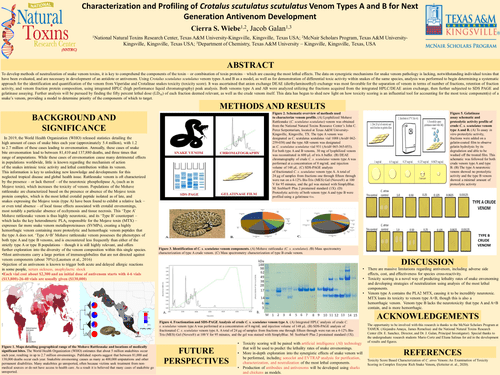To develop methods of neutralization of snake venom toxins, it is key to comprehend the components of the toxin or combination of toxin proteins which are causing the most lethal effects. The data on synergistic mechanisms for snake venom pathology is lacking, notwithstanding individual toxins that have been evaluated, and are necessary in development of an antidote or antivenom. Using Crotalus scutulatus scutulatus venom types A and B as a model, as well as for demonstration of differential toxic activity within snakes of the same species, analysis was performed to begin determining a systematic approach for the identification and quantification of the venom from Viperidae and Crotalinae snakes toxicity (toxicity score). It was ascertained that anion exchange DEAE diethylaminoethyl exchange was most favorable for the separation of venom in terms of number of fractions, retention of fraction activity, and venom fraction protein composition, using integrated HPLC (high performance liquid chromatography) peak analysis Both venoms type A and AB were analyzed utilizing the fractions acquired from the integrated HPLC/DEAE anion exchange, then further subjected to SDS PAGE and gelatinase assaying. Further analysis will be pursued by finding the fifty percent lethal dose (LD50) of each fraction deemed relevant, as well as the crude venom itself. This data has begun to shed new light on how toxicity scoring is an influential tool for accounting for the most toxic component(s) of a snake’s venom, providing a model to determine priority of the components of which to target.
Faculty mentor: Dr. Jacob Galan
Natural Toxins Research Center


